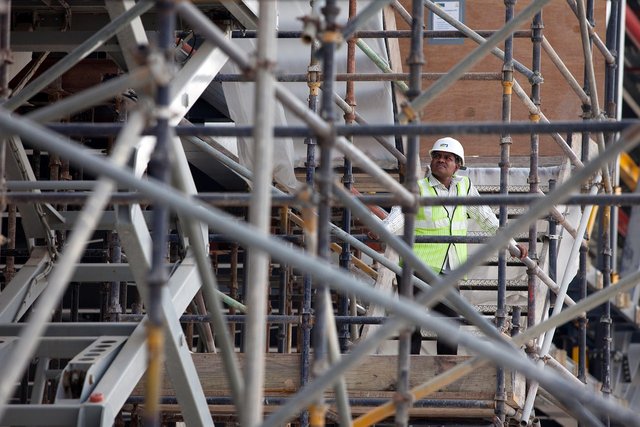Ultimate Guide to Warehouse Construction Cost in Australia
Constructing a warehouse in Australia is a significant investment that requires careful planning and consideration of various factors to ensure both functionality and cost-effectiveness. Whether you're a business owner looking to expand operations or an investor seeking opportunities in industrial real estate, understanding the nuances of warehouse construction costs is crucial.
Working with experienced warehouse builders in Darwin can provide valuable insights into regional requirements, helping streamline the construction process and optimise costs. This comprehensive guide delves into the key elements influencing these costs and offers insights into making informed decisions.
Factors Influencing Warehouse Construction Costs
Several variables can impact the overall cost of constructing a warehouse:
Size and Design Complexity The warehouse's dimensions, including height and floor space, significantly affect the cost. Taller structures require more complex engineering solutions to ensure stability, leading to increased expenses. Additionally, irregularly shaped warehouses often necessitate custom materials and designs, further driving up costs.
Location The geographical location plays a pivotal role in construction costs. In regions like Darwin, factors such as transportation logistics for materials and availability of skilled labour can influence expenses. Remote areas may incur higher costs due to the need to transport materials and workers over long distances.
Local Regulations and Council Requirements Different councils have specific building codes and regulations that can impact construction costs. For instance, certain materials like Zincalume® might be restricted in some areas due to reflectivity concerns, especially near flight paths. Compliance with these regulations can lead to additional expenses.
Intended Use The warehouse's purpose dictates its design and structural requirements. Warehouses intended for heavy industrial use, such as energy infrastructure, may need to withstand natural disasters like earthquakes, necessitating advanced engineering and higher-quality materials, thereby increasing costs.
Site Conditions Pre-existing conditions at the construction site, such as the need for demolition, proximity to other operational facilities, and traffic conditions, can affect both the timeline and cost of the project.
Breakdown of Warehouse Construction Costs
Understanding the specific costs associated with warehouse construction can aid in budgeting and planning:
- Land Acquisition: The cost of land varies widely between urban and regional areas. In Darwin, land prices may differ based on proximity to industrial zones and accessibility.
- Labour Costs: Labour expenses fluctuate depending on the availability of skilled workers in the area. In regions with a scarcity of qualified tradespeople, such as remote parts of the Northern Territory, labour costs can be higher due to the need to bring in external contractors.
- Materials: The choice of construction materials, such as steel or concrete, and their quality directly impact costs. For example, using structural steel is recommended for warehouses over 12 metres in width, with its use becoming essential for structures exceeding 18 metres.
- Additional Features: Incorporating amenities like advanced electrical systems, climate control, or specialised flooring can add to the overall cost.
Estimated Costs Per Square Metre
While costs can vary based on the factors mentioned, approximate estimates for warehouse construction in Australia are as follows:
- Basic Warehouse Structure: $600 to $900 per square metre.
- Warehouse with Flooring and Basic Electrical Work: $900 to $1,200 per square metre.
- Turnkey Warehouse (Comprehensive Design and Construction): $1,300 to $1,800 per square metre.
For a 1,000 square metre warehouse, this translates to: - Basic Structure: $600,000 to $900,000.
- With Flooring and Basic Electricals: $900,000 to $1,200,000.
- Turnkey Solution: $1,300,000 to $1,800,000.
These figures serve as general guidelines and can fluctuate based on specific project requirements and market conditions.
Strategies to Optimise Construction Costs
To manage and potentially reduce warehouse construction costs, consider the following approaches:
- Engage Experienced Local Builders: Collaborating with reputable contractors can provide insights into local regulations, climate considerations, and efficient construction practices, leading to cost savings.
- Efficient Design Planning: Investing time in meticulous design planning can prevent costly modifications during construction. This includes optimising space utilisation and ensuring the design aligns with the warehouse's intended use.
- Material Selection: Choosing cost-effective yet durable materials, such as Colorbond® steel where permitted, can reduce expenses without compromising quality.
- Compliance with Local Regulations: Early consultation with local councils to understand building codes and restrictions can prevent unforeseen costs related to non-compliance.
Additional Cost Considerations
- Energy Efficiency: Implementing energy-efficient solutions such as solar panels and LED lighting may require an upfront investment but can significantly reduce long-term operational costs.
- Automation and Technology: If the warehouse requires automated storage and retrieval systems, the initial cost will be higher but could lead to increased efficiency and lower labour costs over time.
- Insurance and Safety Compliance: Construction insurance, fire safety compliance, and workplace safety measures can add to the overall expenditure.
Conclusion
Constructing a warehouse in Australia, particularly in regions like Darwin, involves a complex interplay of factors that influence costs. By thoroughly understanding these variables and engaging with experienced builders, businesses and investors can make informed decisions that align with their operational needs and financial objectives.
Strategic planning, efficient design, and adherence to local regulations are key to achieving a successful and cost-effective warehouse construction project. Ensuring a well-thought-out approach will not only save money but also contribute to the long-term sustainability and efficiency of the warehouse facility.
